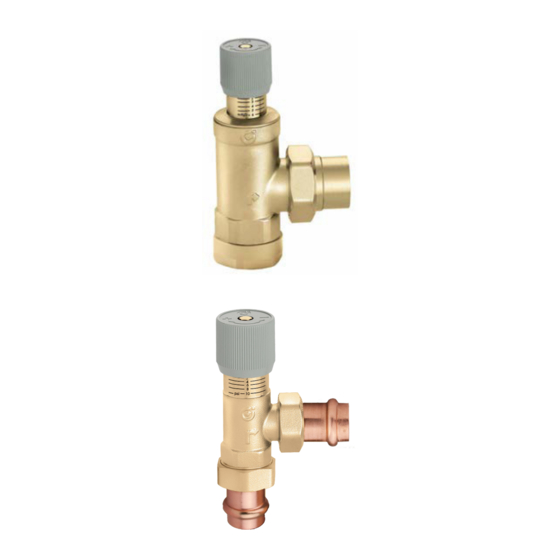CALEFFI 519609A Quick Start Manual - Page 3
Browse online or download pdf Quick Start Manual for Control Unit CALEFFI 519609A. CALEFFI 519609A 4 pages. Adjustable differential pressure by-pass valve with graduated scale

Installation
1
2
3
4
mH
O
6
5
2
Adjustment
Hydraulic
characteristics
code 519502A, 519566A
519599A (3/4")
The di erential pressure by-pass valve can be tted in any position,
respecting the ow direction indicated by the arrow on the valve body.
In systems with a traditional boiler it is normally tted between the
system ow and return ends, which allows the control of the pressure
and the passage of a minimum ow through the heat generator.
In systems with a condensation boiler, it is preferable to
by-pass directly between the upstream and downstream sections of
the pump, as this allows a higher ∆T in the circuit, with lower return
temperatures and therefore better operation of the system.
In the event of high by-pass ow rate levels, it is recommended to t
the valve between the ow and return ends of each column, rather
than tting a number of valves in parallel at the central boiler.
To regulate the valve, turn the knob to the required value on the
graduated scale: the values correspond to the di erential pressure in
psi or meters w.g. to open the by-pass.
For a quick setup adjustment of the di erential pressure by-pass
valve, use the following manual method. As an example, a hydronic
system with several zone valves: the system must be operating, the
zone valves must be fully open and the by-pass valve must be set to
the maximum value (a) (clockwise). Gradually open the di erential
pressure by-pass valve using the control knob (counterclockwise).
Use a thermometer, or simply your hand, to check that the hot water
is owing into the by-pass circuit (b). As soon as a rise in the
temperature is noted, turn control knob (clockwise) one half turn
closed so hot water stops owing into the by-pass (c). Lock the knob
in this position (d) with the locking screw.
a)
b)
1
2
3
4
5
mH
O
2
6
c
∆p (psi)
11
10
9
8
7
6
5
4
3
2
1
0
c)
1
2
1
3
2
4
3
5
4
mH
O
2
6
5
mH
2
O
6
Setting positions
10
8
6
4
2
t the
d)
1
2
3
4
5
mH
2
O
6
∆p (psi) (m w.g.)
11
7
10
9
6
8
5
7
6
4
5
3
4
3
2
2
1
1
0
0
